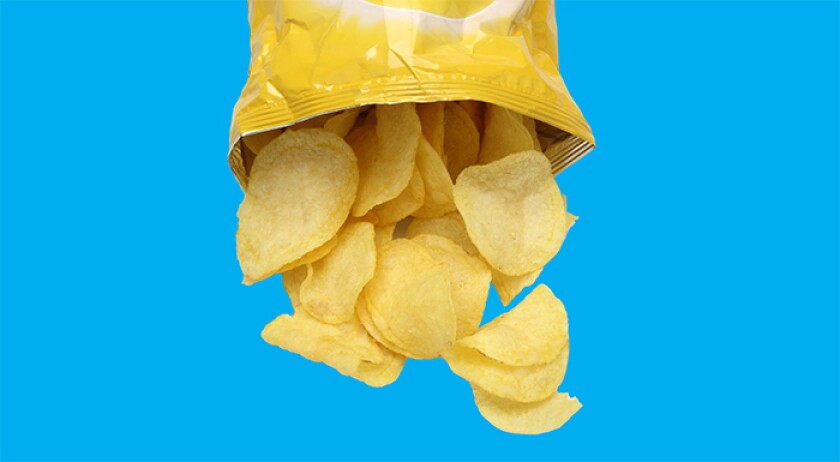The idea that whole foods are good and processed ones are bad is nothing new — an entire supermarket chain built its success on that idea. But not all processed foods are created equal, and increasingly, research has begun to show that some specific kinds may be driving an epidemic of obesity and chronic disease.
Dubbed ultra-processed foods, they have been linked to worse cardiovascular health; a greater risk of cancers, including breast and ovarian; and even disrupted sleep. In May 2023, Swedish researchers published findings that people couldn’t reach a state of deep sleep, the most restorative kind, after eating a diet of mostly ultra-processed foods and that the effects lingered after they had made the switch to a healthier diet.
The thing is, ultra-processed foods are also among the most inexpensive, accessible and arguably delicious items in the supermarket. Plus, they’re among the most ubiquitous: More than 70 percent of the packaged foods Americans eat are considered ultra-processed, and more than half the calories the average American eats comes from them. There’s been a dramatic increase in the consumption of these foods, particularly among adults 60 and older.
It’s probably no surprise that this uptick also corresponds with weight gain. One multinational study showed that normal-weight people who consumed the most processed foods had a 15 percent greater risk of becoming overweight compared with those whose diets contained the least processed foods.
One of the most well-known and telling findings about ultra-processed foods to date was released by the National Institutes of Health (NIH). Researchers randomly assigned people to a diet of either ultra-processed foods or the nutritionally equivalent amount of minimally processed foods for two weeks, then had them switch for two more weeks. While on the first diet, people consumed an extra 500 calories per day, gaining 2 pounds in four weeks. When they ditched the ultra-processed foods, they ate less and lost the same amount of weight.
There’s some speculation that the damage wrecked on waistlines by ultra-processed foods is due to how easy it is to eat them quickly (people in the NIH study were found to eat at a faster rate when on the ultra-processed diet). But the exact cause is still unknown, says Fang Fang Zhang, M.D., a nutritional epidemiologist and associate professor at the Friedman School of Nutrition Science and Policy at Tufts University in Boston. It could be that the combination of ingredients found in ultra-processed foods is somehow harmful.
These are ingredients, such as emulsifiers, stabilizers, and synthetic dyes and flavors, that you won’t find in any home kitchen, Zhang points out. Industrial processing, or chemically manipulating ingredients in a lab to make a food last longer or be more palatable, is what puts the “ultra” in these processed foods. After all, examples like dried herbs and tomato paste are also considered processed foods, but those rank as less processed than any food whose label lists hydrogenated fats or modified starch on the Nova Food Classification System, a tool researchers developed to identify different levels of processing.
With ultra-processed foods so prevalent — and cheap — in Western diets, it’s unlikely anyone can eliminate them completely. And no one says you should. But quality matters, Zhang says. And while most ultra-processed foods are nutritionally poor, some are better than others — think no-sugar-added soy milk or whole-grain breads. If you’re looking to nix some items from your grocery cart, our experts say you should start with these five.
Chips

Some chips are not even close to resembling a potato, says registered dietitian Keri Gans, author of The Small Change Diet. Or corn, in the case of tortilla chips. Or anything with nutritional value, really. Most chips consist of carbs, fat from frying, and sodium. Flavored chips, such as barbecue or cool ranch, are worse, as they’re made with synthetic flavors designed to keep your taste buds wanting more.
Plus, chips are incredibly easy to eat quickly. According to Michael Moss, a Pulitzer Prize–winning journalist and the author of Salt Sugar Fat, ultra-processed foods don’t tend to require much chewing because they contain so much oil and so little fiber that they go down fast. “Another feature is that these problem foods are quite loaded with calories that don’t provide you with much real nutrition,” he adds.
Candy bars

“I personally get leery of any foods that have both sugar and fat, because there is some science that suggests that this combination, which isn’t found much in nature, excites the part of the brain where habits form,” Moss notes. The designation for foods with specific combinations of fat, sugar, sodium and carbohydrates that excite the reward centers of the brain is “hyper-palatable.”
Most candy bars tend to have sugar and fat in abundance. Moss also points out that refined flour, which is always processed, is broken down by and affects the human body in much the same way as sugar. So, combining refined flour with fat, as is common in packaged cookies and snack cakes, is likely to have a similar effect.
If you must eat a candy bar, try to get something with nuts, which at least throws a little protein into the mix, Gans says.
Instant noodles

Sorry, but that sad little dried-veggie packet can’t redeem this meal (a term used loosely here) in a cup. Sure, it’s one of the cheapest things you can buy, but you get what you pay for, namely heavily processed carbs and MSG. Packaged ramen has a whole lot of sodium, with little other nutritional value, Gans says.
A Korean study of college students, unofficially one of the largest consumers of packaged ramen, found an association between frequent consumption of instant noodles and an increased risk of obesity, as well as insulin resistance, high cholesterol and other cardio-metabolic risks in otherwise healthy young adults.
Fast food

Yup, fast food is the OG ultra-processed food. Typical drive-through fast food tends to be heavy on sugar, salt, unhealthy fats, and preservatives and to lack beneficial nutrients. In other words, lots of fast food is also hyper-palatable, and a recent study found that this quality, combined with meals that are calorically dense and can be eaten quickly, spells disaster for healthy eating.
Generally the stuff that’s cheap, yummy and fast has been manufactured and engineered in ways that cause us to overeat, Moss explains. This is a possible reason some data has linked fast-food consumption with food addiction.
Disturbingly, animal studies have shown early evidence that a high-fat diet, such as one that regularly includes fast food, may impair the brain’s ability to regulate calorie intake in as little as two weeks.
Soda
Soft drinks and other sugary beverages are a major culprit in obesity, and a recent review added to the existing mountain of evidence that directly connects drinking them to a higher body weight in adults and children.
Soda also ranked high on a list of addictive foods. Fizzy drinks contain massive amounts of sugar (more than 10) teaspoons per 12-ounce serving), which stimulates your brain to release feel-good chemicals. But it doesn’t tend to taste overly sweet because acids are used as preservatives and flavor enhancers. That makes it easy to keep drinking.
What kind of processed food do you try to stay away from? Let us know in the comments below.









